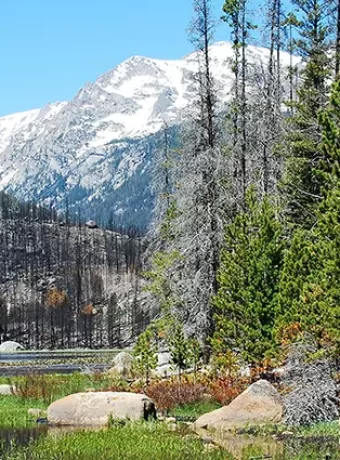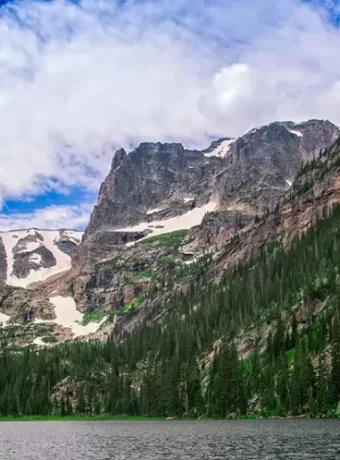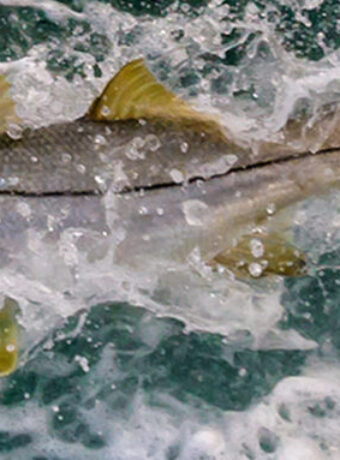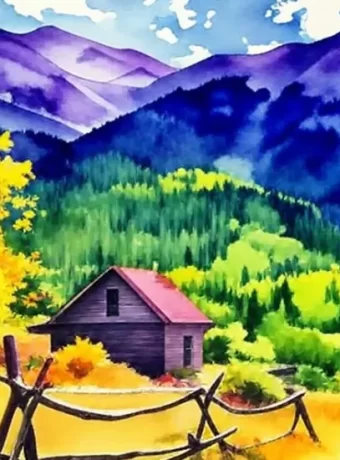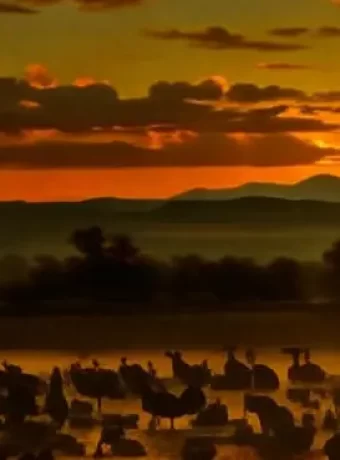Glacier National Park Hikes: Top Breathtaking Trails to Explore
Glacier National Park hikes are a dream for outdoor enthusiasts. With over 700 miles of trails, this Montana gem offers everything from easy strolls to challenging climbs. Discover stunning glaciers, pristine lakes, and diverse wildlife. Let’s get start on Glacier National Park Hikes.
Table of Contents
Trail of the Cedars
This 1-mile loop, perfect for families, is an accessible hike. The Trail of the Cedars winds through ancient cedar and hemlock trees, starting at the Apgar Visitor Center. This wheelchair-friendly boardwalk offers a serene experience. Look for moss-covered rocks and Avalanche Creek’s clear waters on this Glacier National Park hike.
Hike Cedars and Avalanche Lake
Want an easy stroll through some beautiful scenery? Then check out the Trail of the Cedars. This one-mile loop is perfect for all skill levels. It starts at the Apgar Visitor Center. You’ll walk among giant cedar and hemlock trees. The air smells amazing. The forest floor is lush and green. This is a great way to get a taste of Glacier National Park.
The Trail of the Cedars connects to the Avalanche Lake Trail. So, you can easily extend your hike. This adds another 2.7 miles each way to your adventure. This makes it a 5.4 mile round trip. But, it’s worth it! Avalanche Lake is stunning. It sits nestled among towering peaks. Waterfalls cascade down the cliffs. You’ll feel like you’ve stepped into a postcard.
These hikes are perfect for families. Because they’re relatively flat and easy to manage. They offer beautiful views. This makes them a great choice for a relaxing day in the park. Even if you have little ones, these hikes are doable. This makes them some of the best Glacier National Park hikes.
Consider hiking these trails during the spring or fall. The summer crowds will be smaller then. But, the weather is still nice. Plus, the fall colors along the Trail of the Cedars are spectacular. This is just one more reason why this is a favorite for visitors.
If you’re looking for a little more adventure, try the Iceberg Lake Trail. This is a moderate 4.5-mile out-and-back hike. It leads to a lake with (you guessed it) icebergs! It’s an incredible sight. The towering peaks surrounding the lake add to the drama. This hike is a bit more challenging than the others. But, it’s still a great option for a day hike.
Remember to check the trail conditions. Also, make sure you have any necessary permits. Then, get ready to enjoy the beauty of Glacier National Park!
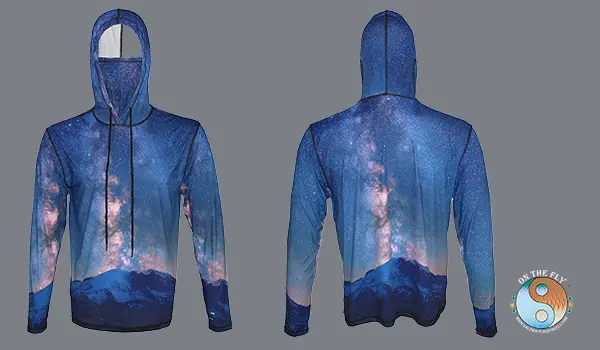
Mount Rainier below Milky Way Graphic Hoodie Hiking Apparel
Outdoor performance apparel in Graphic Nature Designs. Heavy Weight Hydrophobic Cutty Graphic Hoodie, or Lighter Weight Graphic Hoodies, Yosemite Milky Way or Winters Day Cross Country Skiing.
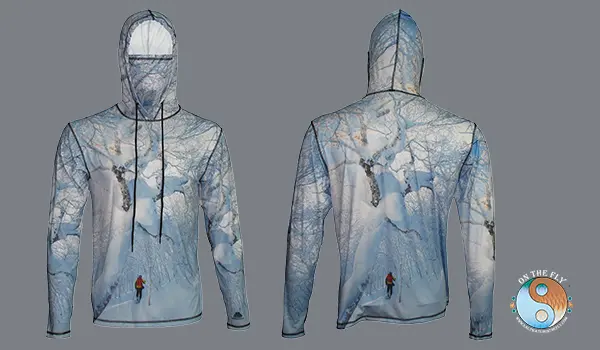
Aspen Grove Cross Country Skiing Graphic Hoodie
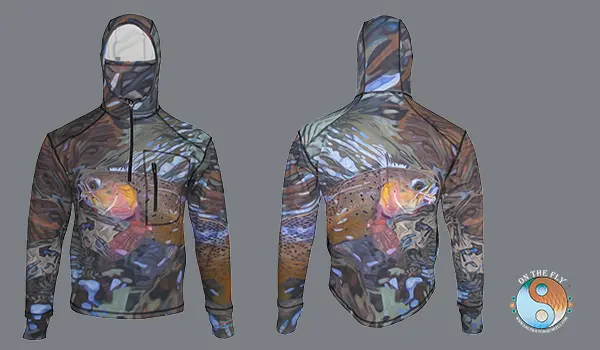
Hydrophobic Cutty Graphic Hoodie
Text content
Iceberg Lake
This popular 9.7-mile round-trip hike to Iceberg Lake offers varied scenery, from wildflower meadows to rocky slopes. It provides expansive views of the Many Glacier area and ends at Iceberg Lake, known for its small icebergs. Be sure to apply some bear spray if you spot any grizzly bears on this trail.
Hike Iceberg Lake
Iceberg Lake Trail is one of the best hikes in Glacier National Park. This 9.7-mile out-and-back hike gains over 1,200 feet in elevation. But don’t let that scare you! The stunning scenery makes it worth every step. This hike is great for adventurous travelers. You’ll be surrounded by towering peaks and alpine meadows. Because of the elevation gain, this is considered a moderately challenging hike. It typically takes about six to eight hours to complete.
The trailhead is located near the Swiftcurrent Inn in the Many Glacier area of the Glacier National Park. From the trailhead, the trail climbs steadily through a beautiful forest. You’ll cross a few small streams. Keep an eye out for wildflowers! They dot the landscape throughout the summer months.
As you climb higher, the trees begin to thin out. You’ll start to get glimpses of the surrounding mountains. The trail then reaches a series of switchbacks. These switchbacks lead to the final climb to Iceberg Lake.
And then, there it is! Iceberg Lake is a truly special sight. This alpine lake is surrounded by towering cliffs. It often has icebergs floating in it, even in the middle of summer. The icebergs are remnants of the winter snow and ice that accumulate in the cirque above the lake. They calve off and create these floating wonders. It’s a breathtaking view and a perfect spot for a picnic lunch.
This is a popular hike. So, it’s best to start early in the morning. This helps you avoid the crowds and secure a parking spot. Bring plenty of water, snacks, and sunscreen. Be prepared for changing weather conditions, as mountain weather can be unpredictable.
If you’re looking for a great backpacking trip, you can combine the Iceberg Lake Trail with the Ptarmigan Tunnel Trail. This creates an overnight loop. This adds on extra mileage and challenge, though. Just be sure to check for necessary permits and make reservations in advance.
Highline Trail
The 11.8-mile one-way Highline Trail follows the Continental Divide. It boasts stunning views of the park’s interior. Starting at Logan Pass, this hiking trail hugs the mountainside with cable handrails, passing alpine environments and potential wildlife sightings of mountain goats and marmots.
Hiking Highline Trail
The Highline Trail is one of Glacier National Park’s most famous hikes. This is because it offers amazing views. But it’s also a challenging hike. So you should be prepared.
The trail starts at Logan Pass. It follows the Continental Divide. This gives you stunning views of the Garden Wall. The Garden Wall is a massive cliff. It stretches for miles.
The most famous part of the Highline Trail is the “Granite Park Chalet.” This historic backcountry chalet offers lodging. It’s a great place to take a break. You can even spend the night.
One thing to watch out for on the Highline Trail is wildlife. Glacier is home to grizzly bears, mountain goats, and bighorn sheep. Be bear aware. Make noise while you hike. This will help keep the animals away.
If you’re looking for a challenge, this hike is for you. It’s a long hike. But the views are worth it. You’ll see glaciers, alpine meadows, and crystal-clear lakes.
Here are a few things to keep in mind while hiking the Highline Trail:
- Bring plenty of water. There are no places to refill your bottles along the trail.
- Wear sturdy hiking boots. The trail can be rocky and uneven.
- Pack layers of clothing. The weather in Glacier can change quickly.
- Start your hike early in the day. This will give you plenty of time to finish before dark.
The Highline Trail is a great hike for experienced hikers. But even beginners can enjoy this trail. Just be sure to take your time and enjoy the scenery. This hike can easily become a multi-day backpacking trip. Consider the Glacier Creek Trail, the Dawson Pass Trail, or even the Pitamakan-Dawson Loop if you want to backpack. These longer trails offer incredible opportunities. They let you experience the park’s backcountry.
Pitamakan Pass
The challenging 15.4-mile out & back, Pitamakan Pass starts in the Two Medicine area. This pass trail winds through forests and alpine tundra, showcasing panoramic views. On a clear day, you can see the prairies. Remember that Glacier National Park is bear country and it’s important to carry bear spray with you.
Hike Pitamakan Pass
Want a tough but awesome hike in Glacier National Park? Pitamakan Pass might be just what you are looking for. This 7.2-mile out-and-back trail climbs over 2,000 feet. But it’s worth it. The views from the pass are unreal. You will see the Pitamakan Glacier and lots of surrounding mountains.
This challenging day hike is best for experienced hikers. The trail is rocky and steep in places. So, make sure you have good hiking boots and bring plenty of water. Because it’s a challenging hike, it is less crowded than some of the easier trails in the park. This means you might feel more alone with nature.
Although it is challenging, Pitamakan Pass is one of the best hikes in Glacier National Park. You’ll see beautiful alpine meadows. And the views from the top are just amazing. If you’re up for a tough hike, give Pitamakan Pass a try.
Here are a few things to keep in mind:
- Check the weather forecast before you go. Mountain weather can change fast.
- Bring bear spray and know how to use it. Glacier is bear country.
- Start your hike early in the day to avoid afternoon thunderstorms.
- Pack layers of clothing. This will help you adjust to changing temperatures.
If you’re looking for an unforgettable backpacking trip, think about the Pitamakan-Dawson Loop. This 17.4-mile loop combines the Pitamakan Pass and Dawson Pass trails. It gives you stunning views of glaciers and mountains. This loop is a serious undertaking though, so plan carefully.

Text content
Hidden Lake Overlook
This 2.7-mile round-trip trail starts at Logan Pass. It offers mountain views and passes through alpine meadows and wildflowers in summer. The overlook provides stunning vistas of Hidden Lake and wildlife viewing opportunities.
Hike Hidden Lake
Hidden Lake is a stunning alpine lake nestled high in the mountains of Glacier National Park. This hike is super popular. But don’t let that scare you away. The views are totally worth it.
This out-and-back trail is about 5 miles roundtrip. It gains about 1,000 feet in elevation. So, it’s considered a moderate hike. You’ll start your journey from the Logan Pass Trailhead. This spot is right on the Going-to-the-Sun Road.
Bring the fly rod. Cutthroat fly fishing is incredible, grizzly bears are a very frequent visitor. Park Service closes the loke at those times of a frequent visitor.
The first part of the trail takes you through a lovely meadow. Keep your eyes peeled for wildflowers in the summer. You might even see some mountain goats grazing. The trail then climbs steadily through switchbacks. This is where it gets a little steep. But the scenery keeps getting better and better. As you climb, you’ll get glimpses of the surrounding peaks and valleys.
Once you reach Hidden Lake Overlook, take a break and enjoy the amazing view. You’ll see the turquoise waters of Hidden Lake below. The mountains rise dramatically around it. It’s a great spot for a photo op. From the overlook, you can continue down to the lake itself. This part of the trail is steeper and rockier. But the chance to see the lake up close is worth the effort.
Hidden Lake is a beautiful spot for a picnic lunch. Just be aware of the wildlife. Bears and marmots are often seen in the area. So, make sure to store your food properly. This is a very popular hike, so you’ll likely share the trail with other hikers. But the crowds thin out the further down you go.
Because this hike starts at Logan Pass, it’s a good idea to arrive early in the day. Parking can fill up quickly, especially during peak season. Check the park’s website for trail conditions and any closures before you go. Bring plenty of water, snacks, and layers of clothing. The weather in the mountains can change quickly. This hike is one of the best easy day hikes in Glacier National Park. You won’t want to miss it.
A Summer Hike to St. Mary and Virginia Falls in Glacier National Park
On a quintessential summer day in Glacier National Park, with clear blue skies and a gentle breeze, the hike to St. Mary and Virginia Falls offers an unforgettable journey through some of the park’s most iconic landscapes. This moderate trail, suitable for most hikers, weaves through forests, meadows, and canyons, showcasing the beauty of bear grass, wildflowers, and panoramic views that define this pristine wilderness.
The Journey Begins
Starting at the trailhead, the path initially winds through a shaded forest of pine and fir. The air is cool and fragrant with the scent of evergreen, and sunlight filters through the canopy, dappling the forest floor. The soft crunch of pine needles underfoot sets a peaceful tone as you begin your ascent, the promise of natural wonders spurring you forward.
Bear Grass in Bloom
As the forest opens up, you’re greeted by expansive meadows where bear grass reigns supreme. These striking plants, with their tall, slender stalks topped by fluffy white blooms, stretch across the landscape like a sea of oversized pom-poms. In summer, they’re in full bloom, glowing in the sunlight and swaying gently in the breeze. Running your fingers over their soft flowers, you can’t help but marvel at how they transform the meadow into an otherworldly scene.
A Riot of Wildflowers
Beyond the bear grass, the meadows burst into a vibrant display of wildflowers. Purple lupines stand tall, their spires reaching for the sky, while fiery Indian paintbrush adds splashes of red and orange. Sunny yellow glacier lilies nod in the breeze, mingling with delicate white bearberry flowers. The ground is carpeted in a colorful mosaic, and the air hums with the activity of bees and butterflies drawn to this floral feast. Pausing to breathe in the sweet, earthy perfume, you’re immersed in a botanist’s paradise.
Panoramic Vistas
As the trail climbs, the views grow increasingly spectacular. At one scenic overlook, the trees part to reveal the rugged peaks of the Continental Divide, their snow-capped summits piercing the deep blue sky. Below, the valley sprawls out in a tapestry of forests, meadows, and the shimmering St. Mary River. It’s a vista that captures the grandeur of Glacier Park, a breathtaking reminder of nature’s vastness that lingers long after you move on.
St. Mary Falls
The distant roar of waterfalls soon fills the air, guiding you downward into a canyon. First comes St. Mary Falls, where water tumbles over three distinct tiers. Each cascade sends up a refreshing mist that catches the sunlight, creating tiny rainbows. The sound is both deafening and soothing, a testament to the raw power of the falls. Standing on a wooden bridge, you feel the cool spray on your skin, a welcome respite from the summer warmth.
Virginia Falls
The trail continues deeper into the canyon, narrowing as it hugs the river’s edge, its turquoise waters churning below. After a short, steep climb, you arrive at Virginia Falls. Here, the water plunges in a single, dramatic drop into a serene pool, its spray casting rainbows in the sunlight. The sight is mesmerizing, a hidden paradise that invites you to linger and soak in the tranquility.
The Return in Golden Light
As you retrace your steps, the late afternoon sun casts a golden glow over the meadows. The bear grass and wildflowers take on a luminous quality, their colors enriched by the shifting light. The panoramic views seem even more vivid, as if nature is offering one final display of its splendor. By the time you reach the trailhead, your legs may be weary, but your spirit is invigorated.
This hike to St. Mary and Virginia Falls delivers everything a summer day in Glacier Park promises—bear grass swaying in the breeze, wildflowers in full bloom, and vistas that leave an indelible mark on the soul. It’s a journey through nature’s finest, a perfect blend of serenity and awe that embodies the essence of this remarkable park.
Total Distance
- From the St. Mary Falls Shuttle Stop:
The round-trip distance is 3.2 miles. This includes 0.8 miles to St. Mary Falls and an additional 0.8 miles to Virginia Falls, then returning the same way. - From the St. Mary Falls Trailhead Parking Area:
If you start from the parking area (located about 0.3 miles east of the shuttle stop), the round-trip distance increases to 3.8 miles, adding approximately 0.6 miles to the total trip.
The shuttle stop is a popular starting point for visitors using Glacier National Park’s shuttle service, while the parking area is an option for those driving to the trailhead.
Elevation Gain
- The total elevation gain for the round trip from the St. Mary Falls Shuttle Stop is approximately 545 feet.
Here’s how it breaks down:- To St. Mary Falls: The trail descends about 260 feet from the shuttle stop.
- To Virginia Falls: From St. Mary Falls, the trail climbs about 285 feet to reach Virginia Falls.
- Return Trip: You descend 285 feet back to St. Mary Falls and then climb 260 feet back to the shuttle stop.
The total elevation gain is the sum of the uphill sections: 285 feet (to Virginia Falls) + 260 feet (back to the shuttle stop) = 545 feet.
- If starting from the parking area, the elevation gain remains roughly the same (around 545 feet), though slight variations in the trail may occur due to the additional distance.
Note that some sources report elevation gains between 450 and 550 feet, likely due to differences in measurement methods or minor ups and downs along the trail. The 545-foot figure aligns with the trail’s main elevation changes.
Average Time to Hike
- The hike typically takes 2 to 3 hours to complete the round trip, including time to enjoy the waterfalls and scenery.
- At an average hiking pace of about 2 miles per hour, the 3.2-mile route from the shuttle stop would take roughly 1.5 hours of moving time.
- Adding stops to admire St. Mary Falls and Virginia Falls, take photos, and rest, the total time for most hikers falls in the 2- to 3-hour range.
- Starting from the parking area (3.8 miles) may add a little extra time, but it still generally fits within the 2- to 3-hour estimate for a casual hike.
This timeframe is consistent with recommendations from the National Park Service and feedback from hikers on platforms like AllTrails, accounting for both walking and enjoyment of the trail’s highlights.
Summary
- Distance: 3.2 miles round trip from the shuttle stop; 3.8 miles from the parking area.
- Elevation Gain: Approximately 545 feet total.
- Time: 2 to 3 hours, including stops.
This hike is a moderately easy summer outing in Glacier National Park, offering stunning views of two waterfalls with a manageable distance and elevation profile for most visitors.
Multi-Day Backpacking Trips
Gunsight Pass
The 20-mile Gunsight Pass trail offers a two-day backpacking trip. Stay at Sperry Chalet or a backcountry campsite. Enjoy varied scenery and the highlight of crossing Gunsight Pass for views of Lake Ellen Wilson.
Backpacking Gunsight Pass
Gunsight Pass is a seriously cool backpacking trip in Glacier National Park. It’s a tough one, but so worth it for the views. This hike takes you right through some of the park’s best scenery. Think mountain goats, wildflowers, and maybe even a grizzly bear (from a safe distance, of course!).
This challenging hike starts at the Lake McDonald Lodge. You’ll hike along the shore of Lake McDonald, the biggest lake in the park. Then, the trail starts climbing. You’ll gain over 2,000 feet in elevation. This makes for a tough climb, but the views make it worthwhile.
The trail crosses several streams and meadows, giving you tons of chances to see wildlife. Keep an eye out for deer, bighorn sheep, and marmots. You’ll pass through forests of cedar and hemlock trees. Wildflowers bloom all along the trail in the summer. Be sure to pack bear spray and know how to use it, this is grizzly country!
At the top of Gunsight Pass, you’ll see stunning views of Lake Ellen Wilson and the surrounding mountains. It’s a perfect spot for lunch and a well-deserved break. You’ll feel like you’re on top of the world.
From Gunsight Pass, you have some choices. You could hike down to Lake Ellen Wilson and camp there. Another choice is to continue to the other side of the pass and find a campsite there. Just be sure to check park regulations and make sure you get a permit.
Backpacking Gunsight Pass isn’t a walk in the park. But this challenging hike is great for experienced backpackers. Just make sure you’re ready for a tough climb and changeable mountain weather.
If you’re looking for an unforgettable backpacking trip in Glacier National Park, put Gunsight Pass on your list. But, plan and prepare. It’s an adventure you won’t want to miss!
Northern Circle Loop
The challenging 52-mile Northern Circle Loop is for experienced backpackers. This 5-7 day trek traverses remote areas, passing glaciers and alpine lakes. It provides ample opportunities for wildlife viewing and utilizes backcountry campsites.
Backpacking Northern Circle Loop
Want a truly epic backpacking trip? The Northern Circle Loop in Glacier National Park is tough, but it’s worth it. This 35-40 mile loop typically takes four to five days. It shows off some of Glacier’s best scenery. This includes alpine meadows, pristine lakes, and rugged mountain passes. But be ready for some serious elevation gain and changes in weather.
Planning is key for the Northern Circle Loop. You’ll need a permit for backcountry camping. Reserve this well in advance. This hike is popular. Make sure you pack layers of clothing. Weather in Glacier can change quickly. A good map and compass, or a GPS device, are essential.
The Northern Circle Loop typically starts at Bowman Lake. From there, you’ll hike to Brown Pass. Then you’ll head down to Hole-in-the-Wall campground. This campground offers stunning views. It’s a great spot to rest. Next, you’ll tackle Boulder Pass. This is one of the highest points on the loop. The views from the pass are incredible. You can see the Belly River Valley. You can also see the surrounding peaks.
After Boulder Pass, the trail descends to Glenns Lake. Many hikers choose to camp here. It’s a peaceful spot. The next leg of the journey takes you over a lower pass to reach Elizabeth Lake. This lake is a highlight for many. It is known for its crystal-clear water. From Elizabeth Lake, the trail climbs again to cross Stoney Indian Pass. This pass offers panoramic views of the surrounding area.
The final stretch of the Northern Circle Loop follows the Stoney Indian Lake Trail. This goes along the shore of the lake and back down to Bowman Lake. While this loop is a challenge, the rewards are huge. This backpacking trip gives you an unforgettable experience. You’ll see the best of Glacier National Park’s backcountry.
Backpacking Continental Divide Trail Through Glacier National Park
Want a real adventure? Try backpacking the Continental Divide Trail where it cuts through Glacier National Park. This section of the CDT is serious business. It’s known for its rugged beauty and tough challenges. Think high mountain passes, fields of wildflowers, and maybe even a grizzly bear or two. But the payoff? Absolutely breathtaking views you won’t find anywhere else. This experience is something you’ll remember forever.
A popular section of the CDT in Glacier is the Highline Trail. This iconic trail gives you amazing views of Glacier’s famous peaks. It’s a true bucket-list hike for any serious backpacker. Although the Highline Trail is mostly above the tree line, it does dip into forested areas. You’ll experience the best of both worlds.
If you’re feeling really ambitious, consider the Pitamakan-Dawson Loop. This challenging loop takes you through some of Glacier’s most remote and stunning landscapes. It includes both Pitamakan Pass and Dawson Pass. This loop also involves some serious elevation gain, so be prepared to work for those views!
Now, before you grab your pack and head out, planning is key. Glacier has a permit system for overnight trips. You’ll need to reserve your campsites in advance. This is super important, because campsites fill up quickly, especially during peak season. Because weather in Glacier can change on a dime, packing layers is a must. Be ready for sunshine, rain, and maybe even a little snow, depending on when you go. And, of course, don’t forget your bear spray. Knowing how to use it properly can be the difference between a great trip and a scary one.
Remember to check trail conditions before you go. The park’s website is a great resource for current information. It’s also a good idea to talk to a ranger at a visitor center. They can give you the most up-to-date info and help you make smart choices for your backpacking trip.
Other Notable Hikes
Swiftcurrent Pass
The 13.6-mile Swiftcurrent Pass trail is strenuous. The hike shows some of the best views in the Many Glacier area, passing lakes and offering panoramic views. Hiking to the Swiftcurrent Fire Lookout provides even more views.
Cracker Lake
The 12.6-mile round-trip Cracker Lake hike starts in the Many Glacier area. The trail follows an old mining road, climbs through forests and meadows, and ends at a beautiful turquoise lake.
Ptarmigan Tunnel
The 10.7-mile round-trip Ptarmigan Tunnel trail offers a unique experience. It features views of Ptarmigan Lake and involves a climb to the tunnel blasted through the mountain. This tunnel leads to a new landscape, showcasing views of Elizabeth Lake and the Belly River Valley.
Dawson-Pitamakan Loop
The Dawson-Pitamakan Loop, a challenging 17.2-mile circuit, is known for the park’s diverse scenery. It combines two mountain passes, suitable for a very long day hike or a two-day backpacking trip. The loop has great views.
Hiking Safety and Preparation
Before your Glacier National Park hikes, preparation is key for your park hike.
- Check trail conditions and weather forecasts.
- Carry water and snacks.
- Wear proper hiking footwear and layers.
- Carry bear spray and understand its use.
- Inform someone of your plans.
- Start early to avoid weather issues and crowds.
Glacier National Park is grizzly bear territory. Making noise is important, especially near blind corners and in vegetation. This helps avoid surprising bears.
Best Times to Hike
The best hiking season is late June to mid-September when trails are snow-free. The Going-to-the-Sun Road is open then. The park uses a ticketed entry system during peak season. Reservations are a must.
FAQs about Glacier National Park Hikes: Top Trails to Explore
What is the prettiest hike in Glacier?
The Highline Trail is often considered the most scenic, offering sweeping vistas. Its diverse alpine environments are a favorite. Other stunning options include Hidden Lake and the Lake McDonald area.
What should I not miss at Glacier National Park?
A drive on the Going-to-the-Sun Road is essential. Hike to a glacier like Grinnell Glacier. Spend some time in the beautiful Many Glacier area and the West Glacier area, too. Don’t miss the easy Trail of the Cedars and Hidden Lake Overlook. Lake McDonald offers boating and views of the surrounding mountains, perfect for viewing a glacier overlook.
What is the hardest trail in Glacier National Park?
The 17.2-mile Dawson-Pitamakan Loop is known as one of the hardest day hikes, due to elevation gain. The 52-mile Northern Circle Loop is a challenging backpacking trip with the highest elevation gain, best for the seasoned backpacker.
What is the prettiest part of Glacier National Park?
The Many Glacier area is often considered the prettiest. It offers beautiful views and popular trails. However, beauty exists throughout the park, even at Fishercap Lake and other remote parts of this national park.
Conclusion of Glacier National Park Hikes
Glacier National Park hikes provide endless adventure. From nature walks to challenging treks, the trails reveal the park’s diverse beauty. Experiences include viewing turquoise lakes, crossing mountain passes, and observing wildlife. Keep an eye out for a moose or even a grizzly bear during your Glacier National Park visit.
Respect the environment, practice Leave No Trace, and prepare for weather changes. With proper planning and an adventurous spirit, Glacier National Park creates lasting memories. Pack your backpack and explore this amazing national park. Explore and choose your favorite hikes.

